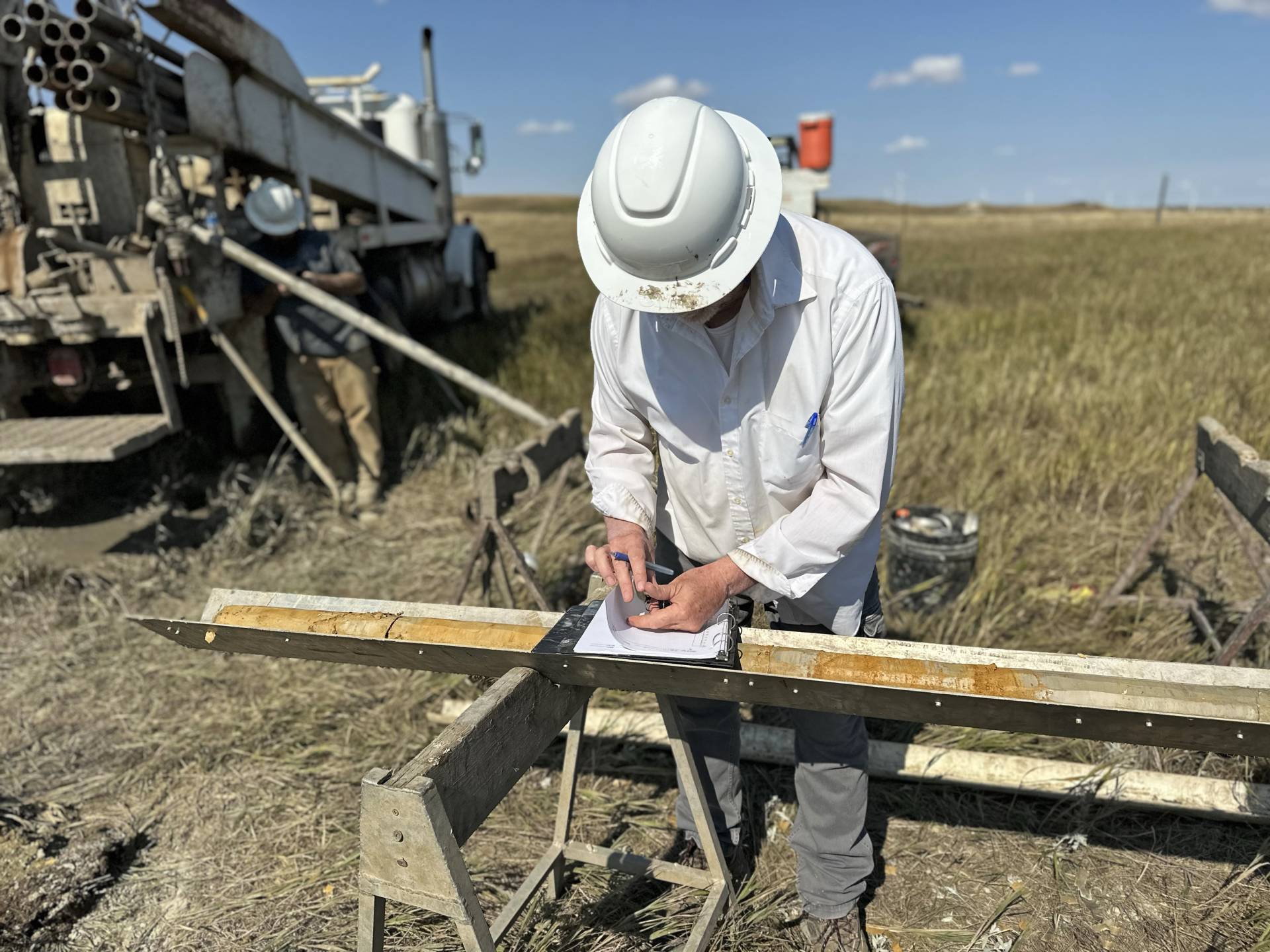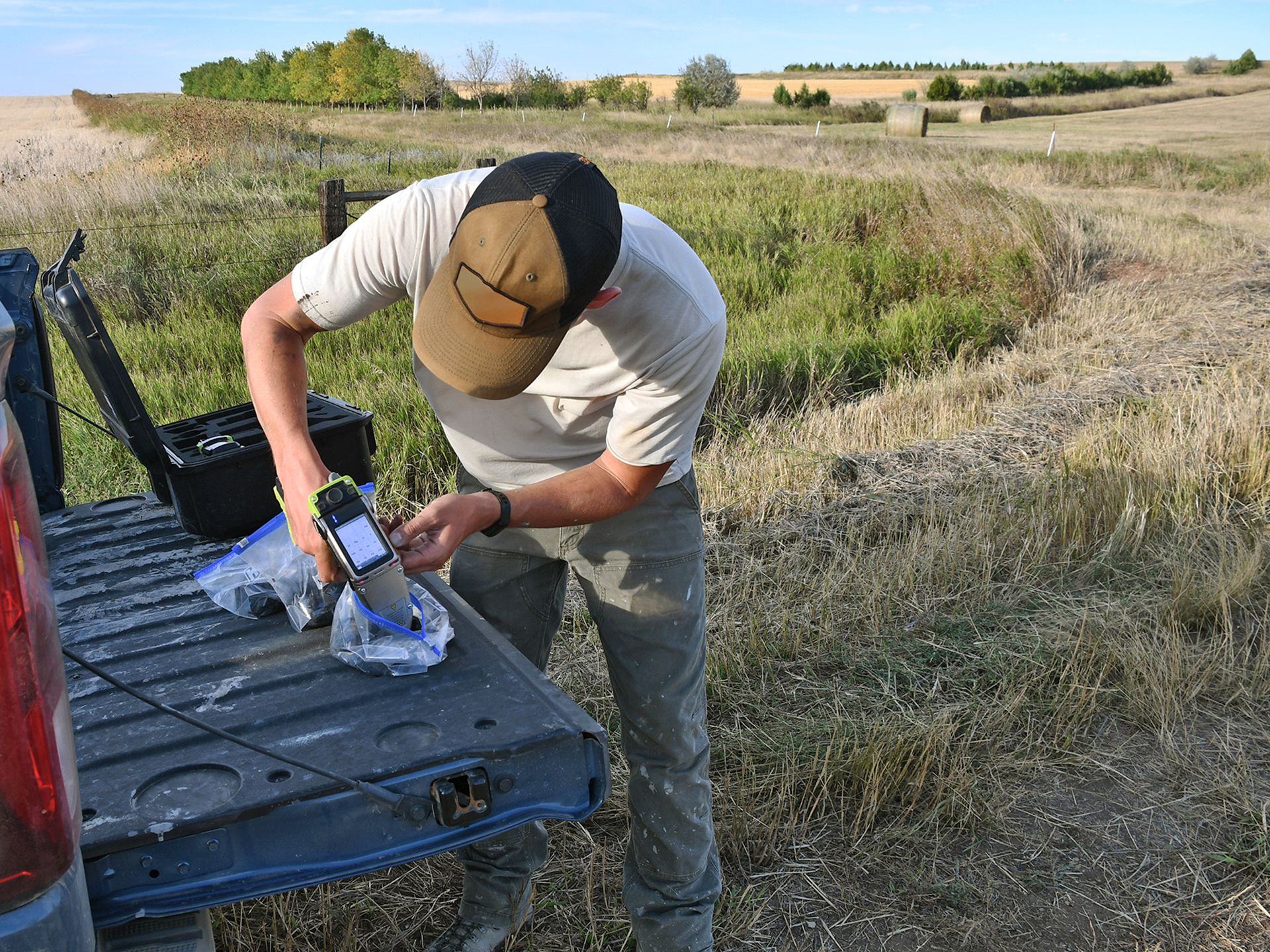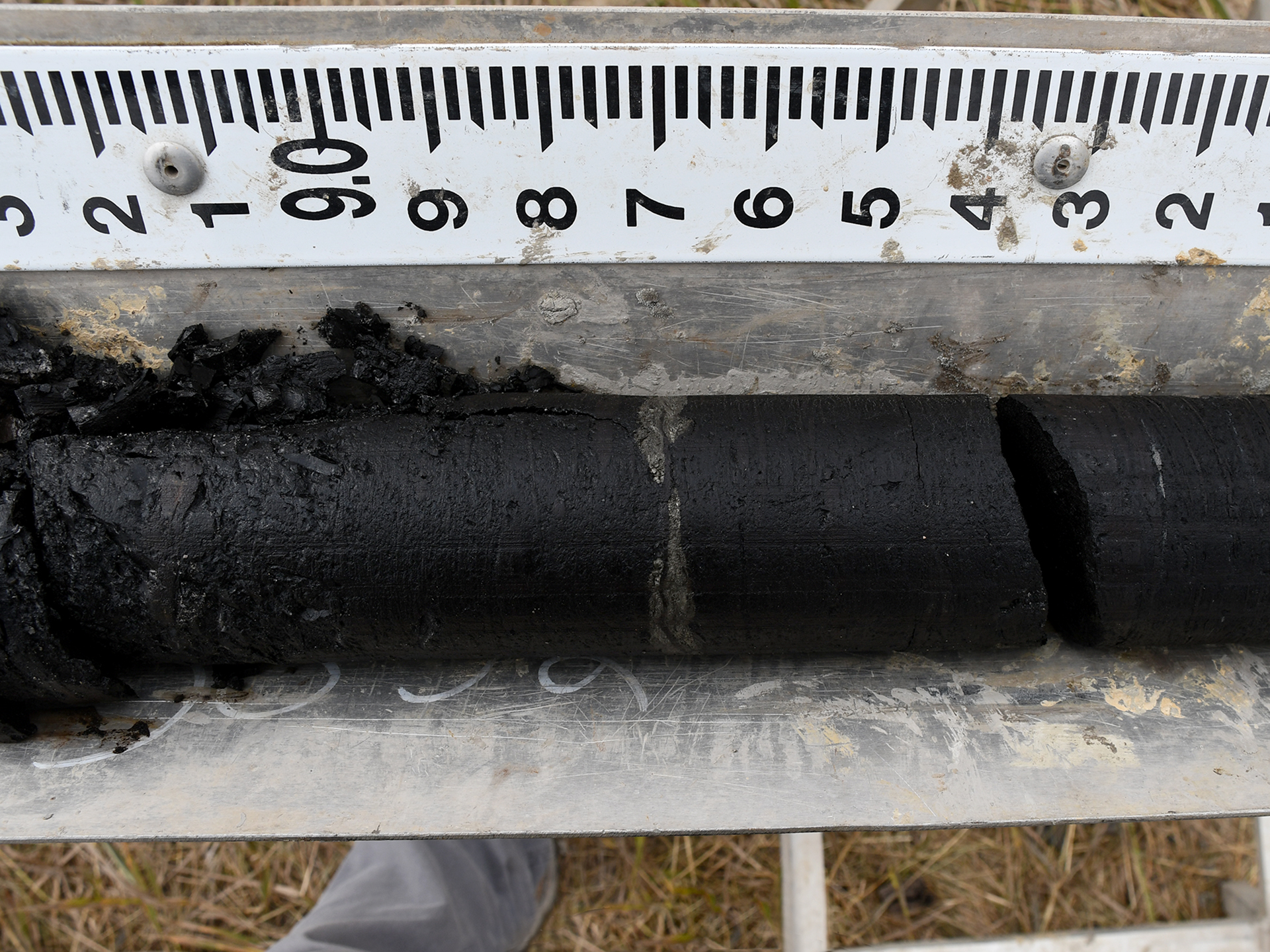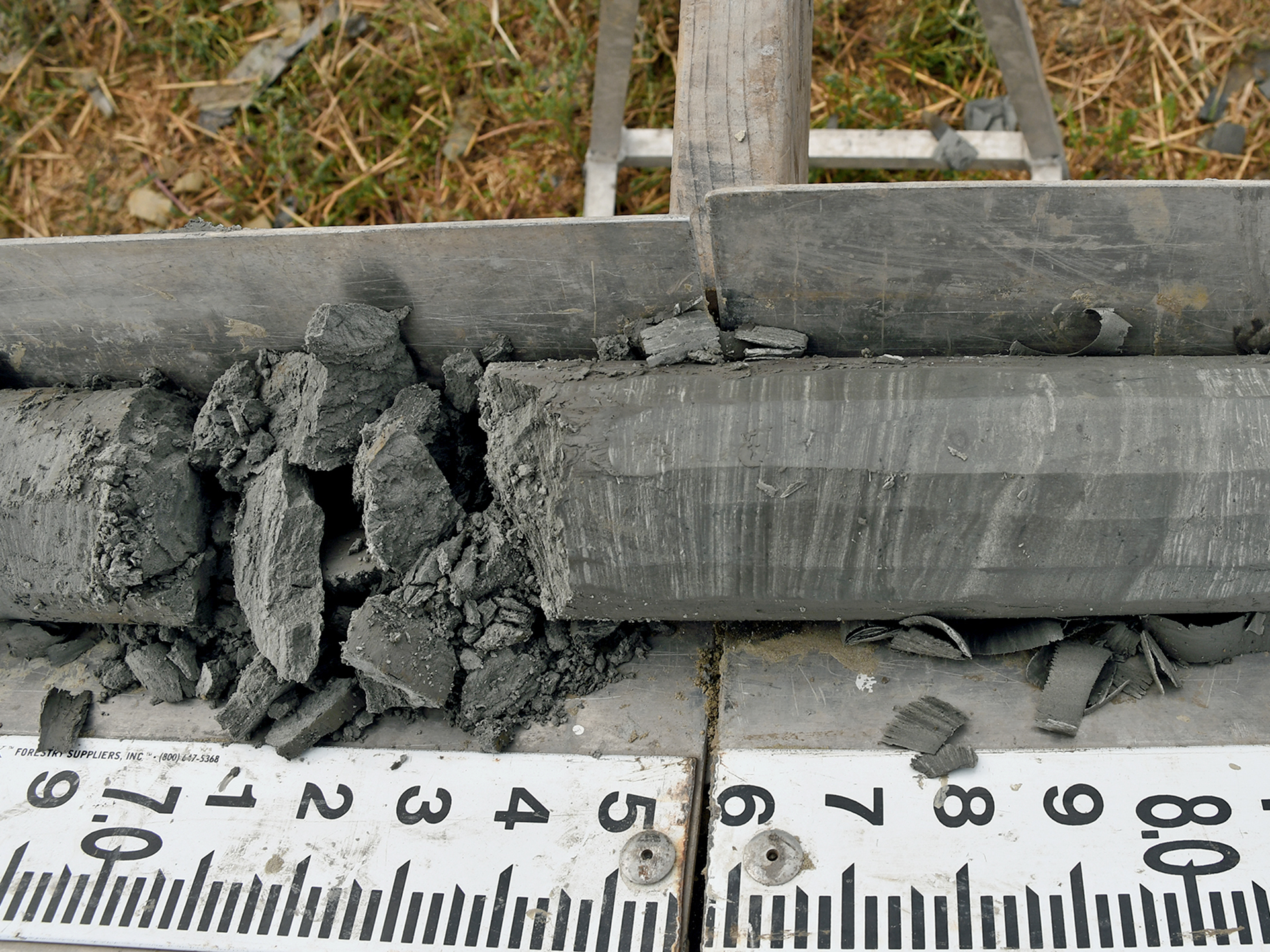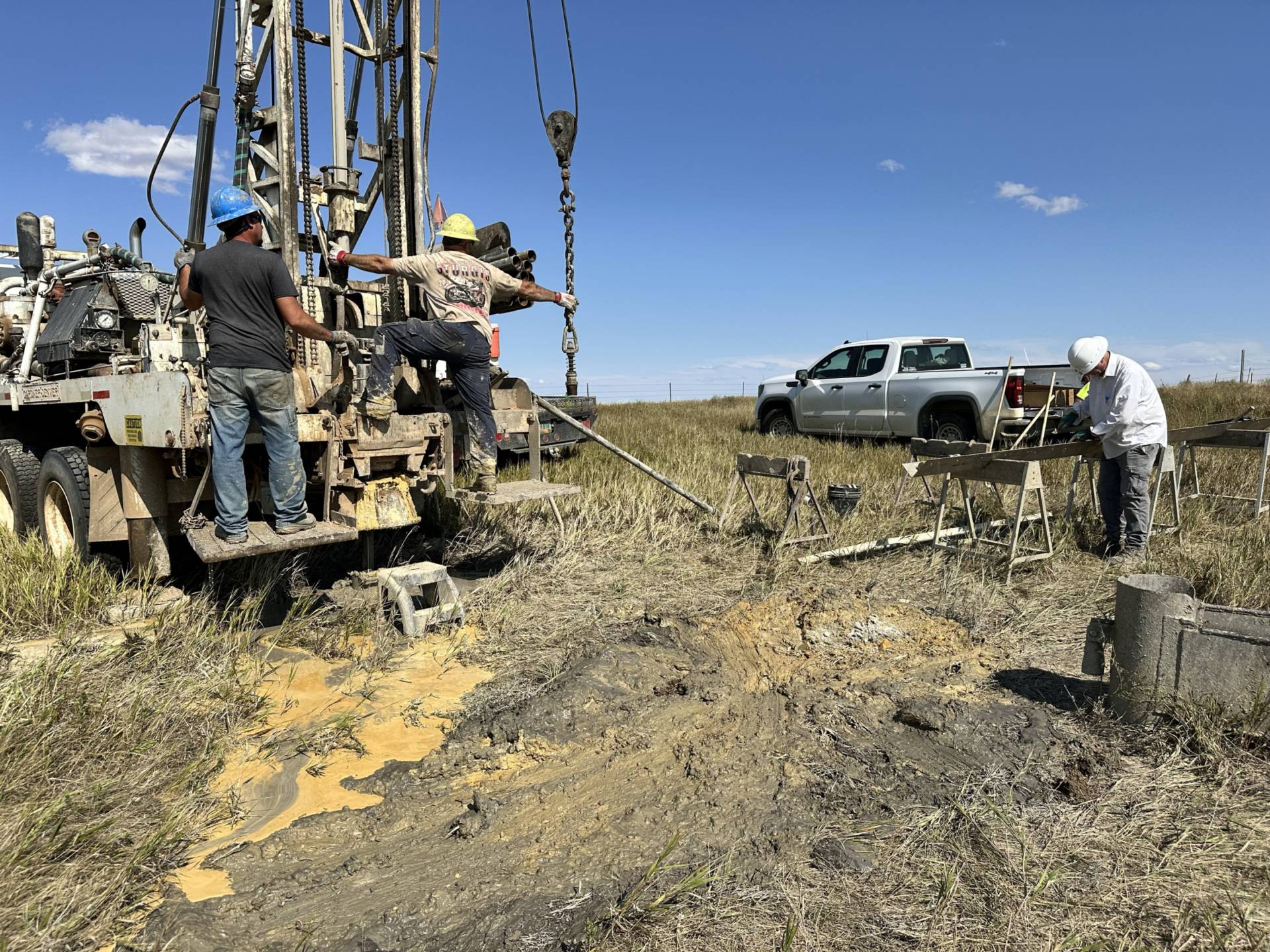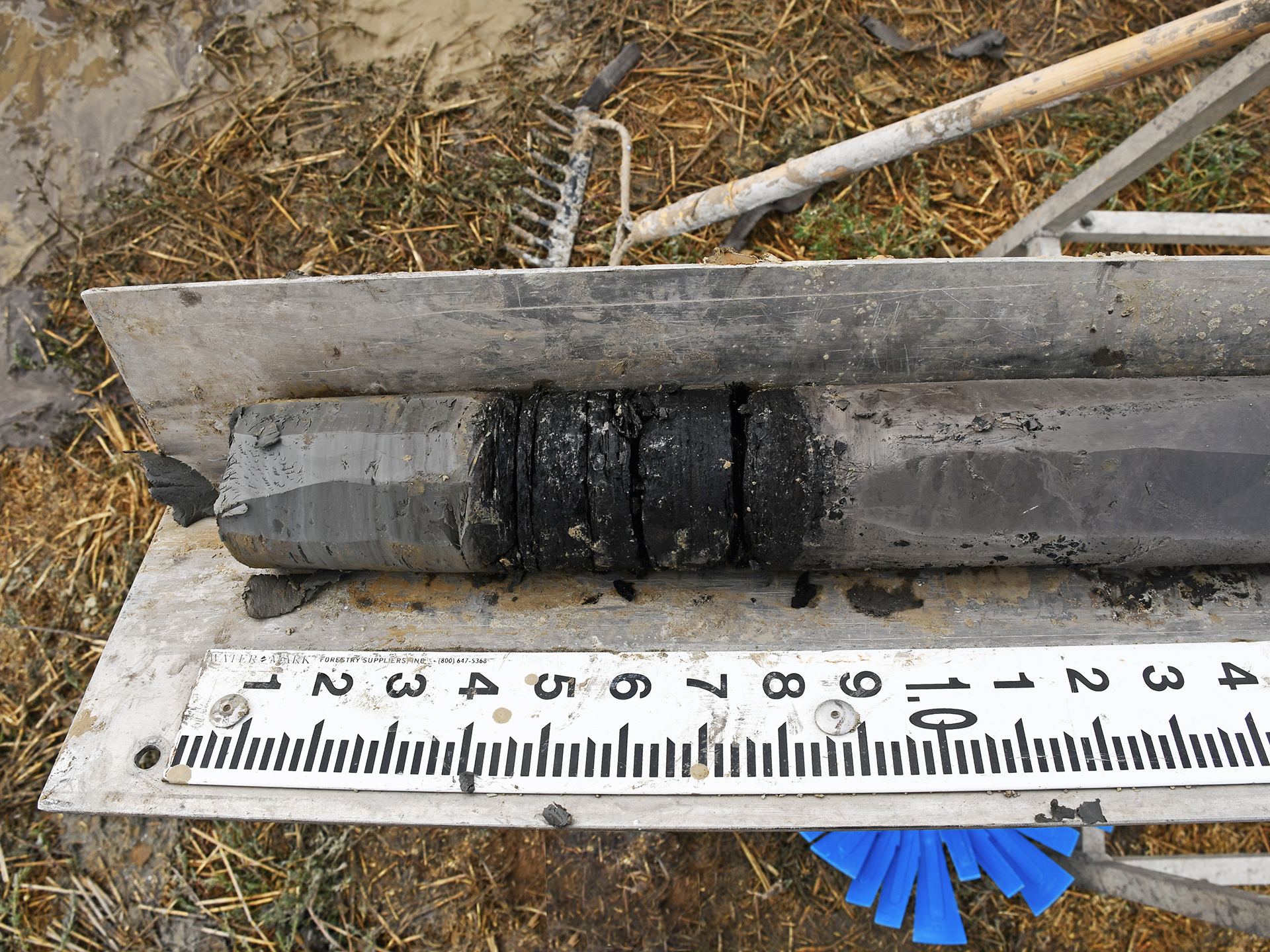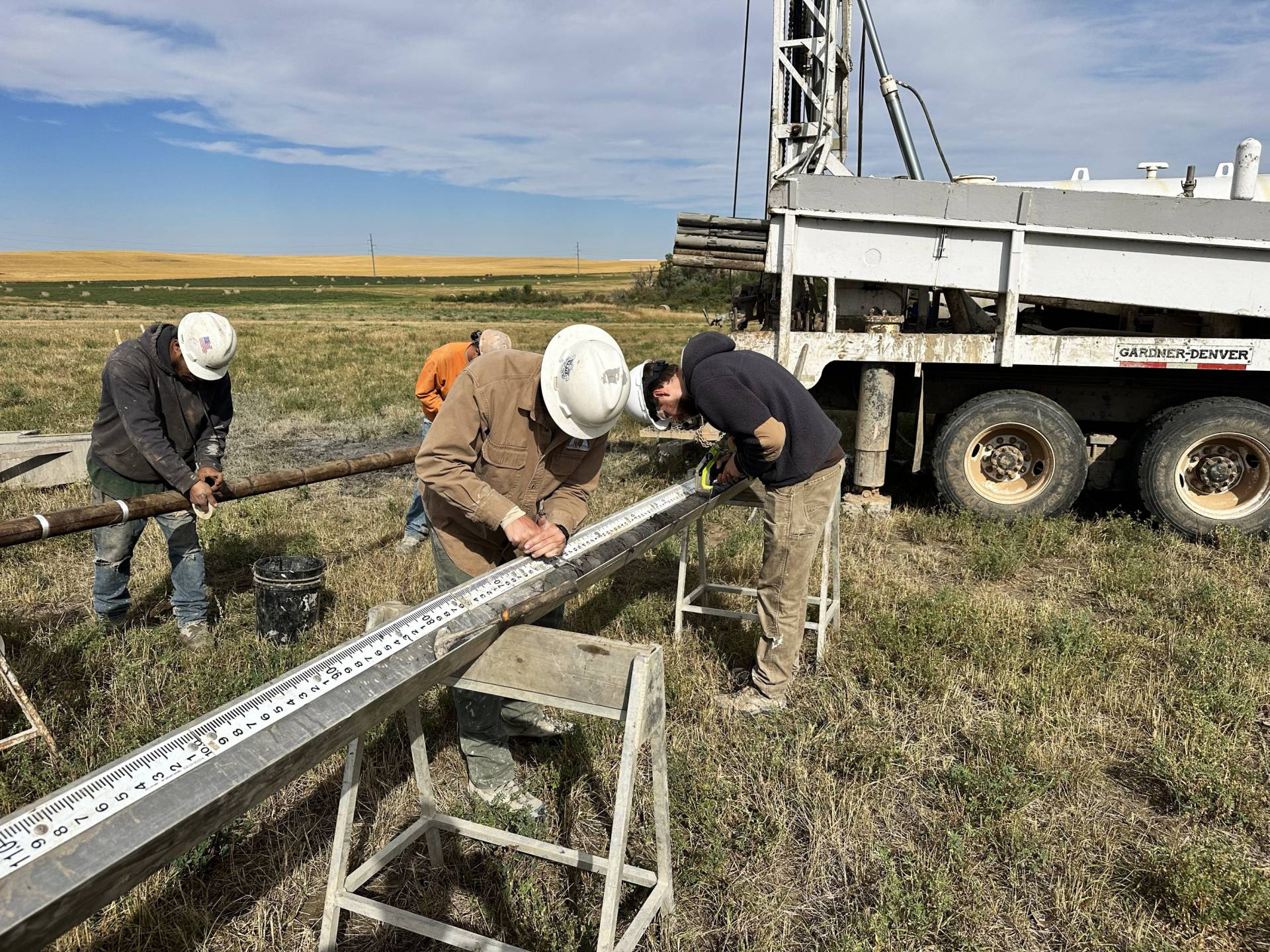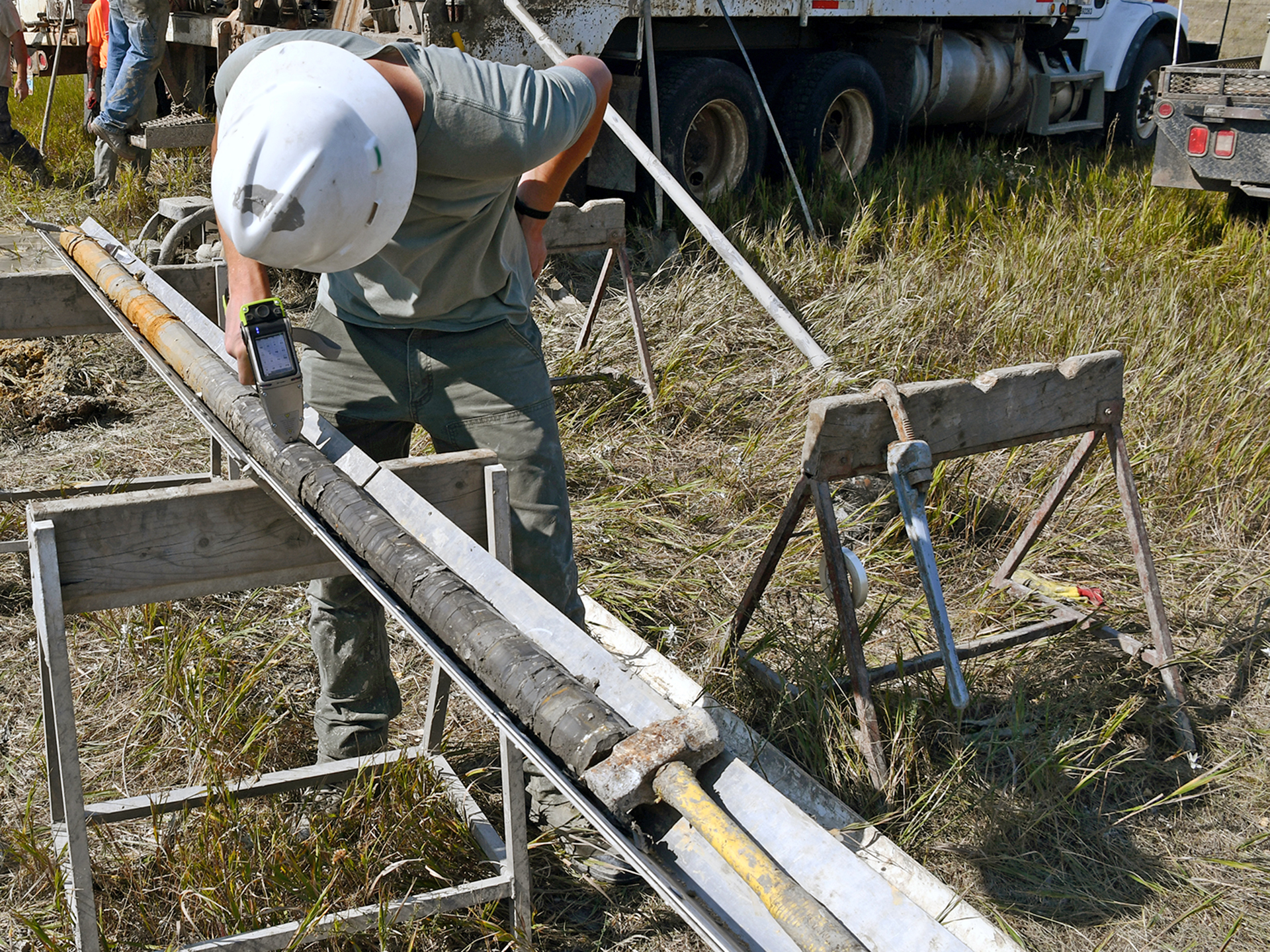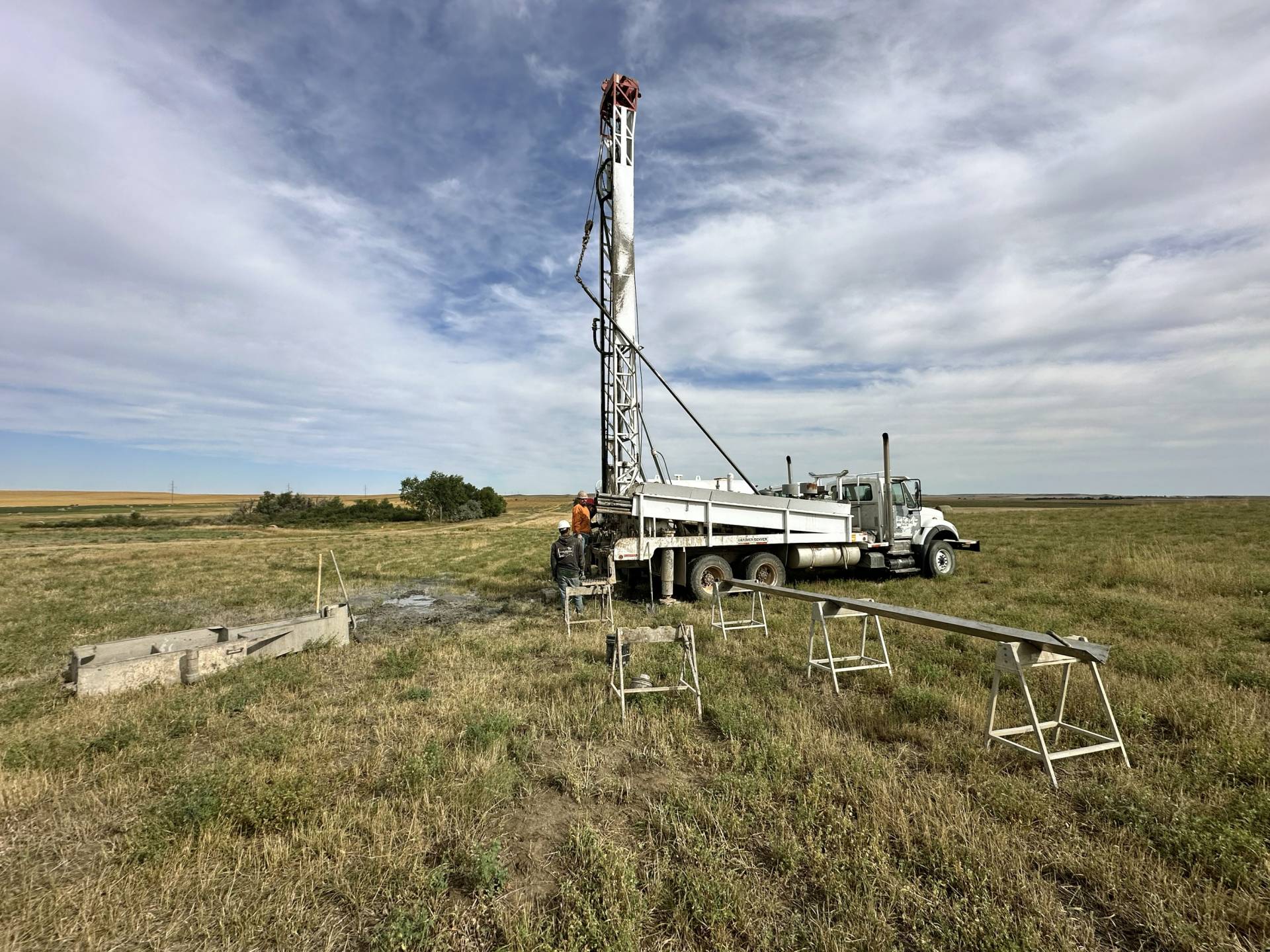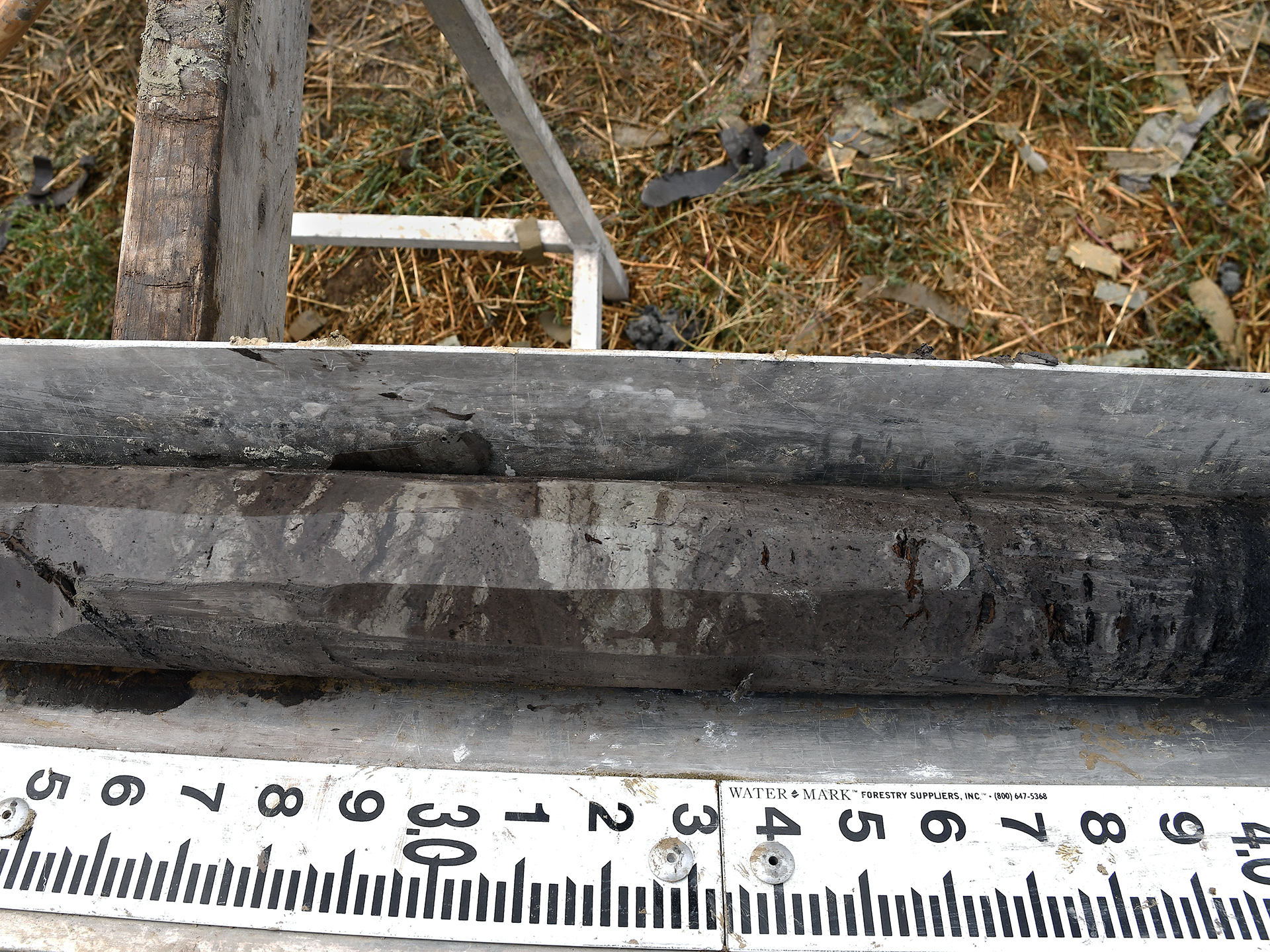The updated 2022 list of critical minerals is diverse: aluminum, antimony, arsenic, barite, beryllium, bismuth, cesium, chromium, cobalt, fluorspar, gallium, germanium, graphite, hafnium, indium, iridium, lithium, magnesium, manganese, nickel, niobium, palladium, platinum, rhodium, rubidium, ruthenium, tantalum, tellurium, tin, titanium, tungsten, vanadium, zinc, zirconium, and the sixteen rare earth elements (REE). The rare earths, often included as a group because they are chemically similar and commonly occur together, are often the first example used when discussing critical minerals.
- Critical Minerals Below North Dakota's Oldest Landscapes - Part I, by Levi D. Moxness
In the fall of 2014, the North Dakota Geological Survey proposed a rare earth project in their 2015-2017 biennial budget that was subsequently approved during the 2015 legislative session. In September 2015, the Geological Survey began collecting lignite, organic-rich mudstone, and clinker/coal ash samples in western North Dakota for rare earth element analysis. Photographs were taken of each sample interval and coal quality was noted; i.e., highly cleated, moderately cleated, oxidized, etc.
The NDGS is fortunate to have access to a variety of data and tools to give us a better chance at finding and coring lignites, which are often thin or absent altogether in these tight stratigraphic windows. Geophysical logs from over 19,000 holes were interpreted and digitally cataloged in the late 1990s and early 2000s as part of the NDGS’s study on the lignite resources of North Dakota. These logs were collected by the coal, uranium, and clay industries, as well as test holes drilled by the North Dakota Department of Water Resources, coal exploration holes drilled by the NDGS and the United States Geological Survey, and oil wells with shallow gamma logs.
Sampling has been broadly distributed, both geographically and stratigraphically. To date, these investigations have yielded thousands of laboratory-analyzed samples and hundreds of measured geological sections. Through their extensive research, NDGS has gained a rather cohesive explanation for the rare earth element distribution in the Williston Basin and is now able to narrow down the exploration.
The North Dakota Geological Survey (NDGS) was awarded $500,000 from the 68th Legislative Assembly to implement a critical mineral drilling program in the FY2023-2025 biennium. The NDGS has worked with interested private landowners throughout the project, but most of the sampling work to date has been on U.S. Forest Service or ND State Trust Lands, with whom the NDGS maintains collection permits. The North Dakota Department of Trust Lands manages significant acreages with mineral rights retained by the State across west-central ND, providing excellent overlap with the areas of interest. Focusing drilling on State-owned mineral lands also meets the Survey’s responsibilities as outlined in the North Dakota Century Code Section 54-17.4-02: 13. Investigate the kind, amount, and availability of the various mineral substances contained in state-owned lands, so as to contribute to the most effective and beneficial administration of these lands for the state.
Drilling took place in late summer of 2024. Stay tuned for results from the program and what they mean for the extent of enrichment of critical minerals in these unique lignites in western North Dakota.
Since 2015, NDGS has authored numerous reports and articles detailing the progress of the rare earth and other critical minerals (REE-CM) study and will continue to feature all the latest findings in future publications.
NDGS Resources for Rare Earth Elements & Other Critical Minerals
REPORTS OF INVESTIGATION
| RI-134 | Critical Mineral Enrichment In Lignites Beneath The Rhame Bed (Paleocene) Of The Slope Formation In The Williston Basin Of North Dakota, by Moxness, L.D., Murphy, E.C., and Kruger, N.W., 2023. |
| RI-133 | Elevated Critical Mineral Concentrations Associated with the Paleocene-Eocene Thermal Maximum, Golden Valley Formation, North Dakota, by Murphy, E.C., Moxness, L.D., and Kruger, N.W., 2023. |
| RI-131 | Rare Earth and Other Critical Element Concentrations in the Sentinel Butte and Bullion Creek Formations (Paleocene), Billings, McKenzie, and Golden Valley Counties, North Dakota, by Kruger, N.W., Moxness, L.D., and Murphy, E.C., 2022. |
| RI-130 | Critical Minerals in the Fox Hills (Cretaceous), Hell Creek (Cretaceous), and Ludlow (Paleocene) Formations in North Dakota, by Moxness, L.D., Murphy, E.C., and Kruger, N.W., 2022. |
| RI-128 | Rare Earth and Other Critical Element Concentrations in the Sentinel Butte Formation, Tracy Mountain, North Dakota, by Moxness, L.D., Murphy, E.C., and Kruger, N.W., 2021. |
| RI-119 | Rare Earth Element Concentrations in the Harmon, Hanson, and H Lignites in Slope County, North Dakota, by Murphy, E.C., Moxness, L.D., Kruger, N.W., and Maike, C.A., 2018. |
| RI-117 | Rare Earth Element Concentrations in Fort Union and Hell Creek Strata in Western North Dakota, by Kruger, N.W., Moxness L.D., and Murphy, E.C., 2017. |
GEO NEWS ARTICLES
| January 2025 | Critical Context: Drilling for Rare Earth Elements and Other Critical Minerals in ND Lignites, by Moxness, L.D. |
| July 2024 | Designing A Critical Mineral Drilling Program, by Moxness, L.D. |
| July 2023 | Critical Minerals Below North Dakota's Ancient Subtropical Soils - Part II, by Moxness, L.D. |
| January 2023 | Critical Minerals Below North Dakota’s Oldest Landscapes - Part I, by Moxness, L.D. |
| July 2022 | Lithium Exploration in the Williston Basin and the Potential of Madison Brine Waters in Western North Dakota, by Nesheim, T.O. |
| January 2021 | Critical Minerals in North Dakota, by Moxness, L.D. |
| January 2021 | Estimating Rare Earth Concentrations, by Kruger, N.W. |
| July 2019 | Helium Listed as a Critical Mineral, by Kruger, N.W. |
| January 2019 | Rare Earth Study, by Murphy, E.C. |
| January 2017 | Rare Earths in Coal, by Kruger, N.W. |
| January 2015 | A "Rare" Opportunity, by Kruger, N.W. |

